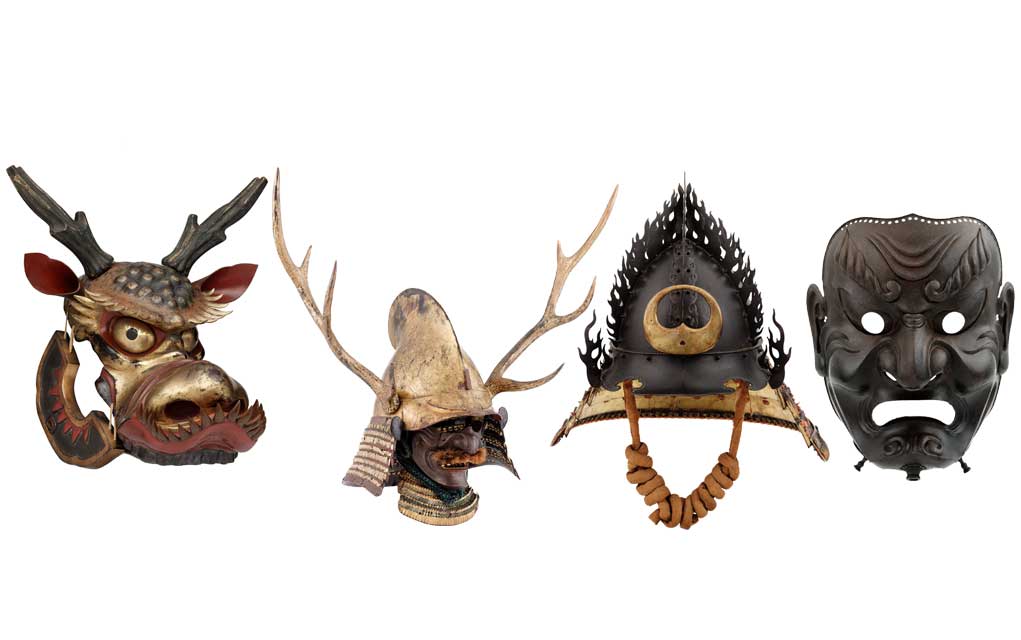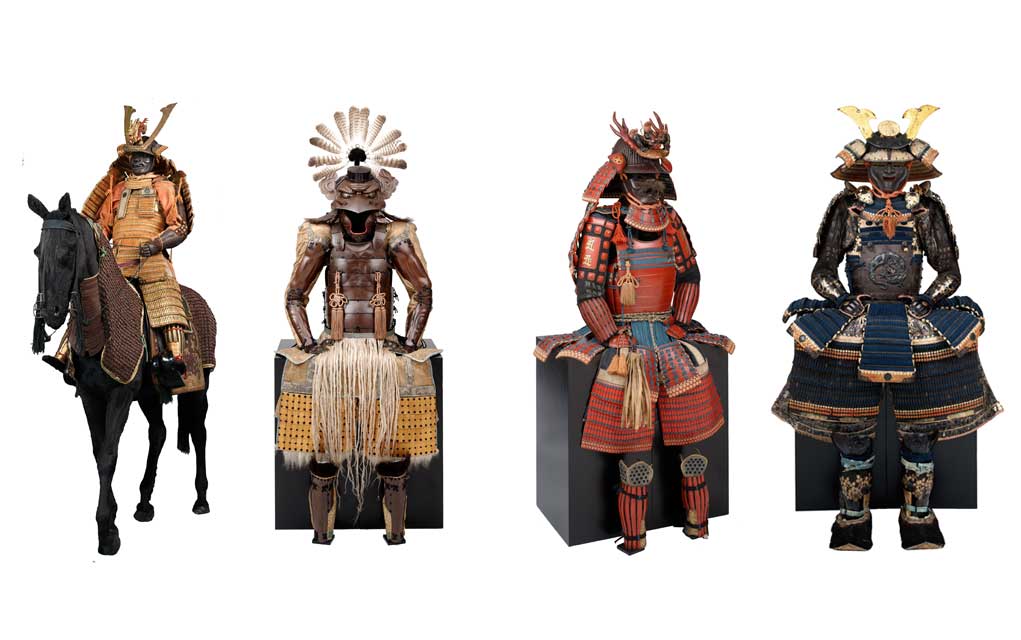
Identity can take many forms. For the samurai warriors who reigned through Japan for seven centuries, a suit of armor expressed more than a need for protection.
“Your helmet is your insignia as a samurai on the battlefield. Also, it shows your rank in society, how much money you have, how powerful you were,” says art historian Jessica L. Beasley. “These were all ideas they took very seriously. You can incorporate certain elements in your armor that kind of project [who you are] to the rest of the world.”
Each piece of equipment contributes to the historical narrative of this ancient warrior class, and that’s what the Denver Art Museum is hoping do with Samurai, through June 5.
The exhibit showcases multiple suits, weaponry, helmets, face guards, horse trappings and a complete armor set. With pieces ranging from the 12th to 19th centuries, the viewer is able to see the evolution of the gear as it adapted to technological advances — from bow and arrows to gun warfare, for example. All 140 artifacts in the show are from the Ann and Gabriel Barbier-Mueller Collection, which Beasley curates.

The samurai represents a class of Japanese society boasting a detailed history that has filled the pages of countless books. For the layman, their origins are in the mid 1100s when farmable land was scarce, and wealthy, high-ranking landowners, known as daimyos, needed a way to protect their property. The daimyos hired men who would fight and be loyal, eventually evolving into the concept of the samurai. Over the centuries, most of the fighting was between the landowners, with only brief invasions from outsiders, including an attempt from the Mongols in the late 13th century. The samurai’s reign ended in the mid 19th century as the government reclaimed control of the country.
Known for their brutal and cunning battle prowess, the samurai were more than expert archers and sword swingers. Their studies were broad and varied in order to become the ultimate soldier.
“They wanted to live well-rounded lives and practice the arts and understand philosophy and writing,” Beasly says. “They were wise enough to know education was going to make them better warriors. … They were perfectionists in how they conducted their lives. Art was very important to them, literature was very important. The ancient tales and the books about the great, epic wars were very important to them, and all of them had an extensive knowledge of it.”
It wasn’t only their minds that were influenced by literature, so was their armor. One section of the Denver exhibit features a series of helmets depicting a variety of inspirations including religion, animals, geography, mythology and European foreigners.
“The Japanese have all kinds of folklore and animals in history that protect people and serve as a guardian of their spirit and their house. So they also decorate their helmet with all the symbols of these animals. It’s very creative,” says Tianglon Jiao, curator of Asian art for the Denver Art Museum. “The idea is to express yourself and to protect yourself.”
With each artifact in the exhibit, the craftsmanship is undeniable. The attention to detail in every inch of every piece is astonishing, and the viewer almost forgets that everything was made to be functional. For example, one mask in the collection has a detachable nose, convenient for comfort and sweat removal, but even the two small hooks that clamp the section in place are carved into the shape of doves.

The relics blur the line between art and war, suggesting the two can be one in the same. Consequently, in those days, the aesthetics of the armor were also important, more so than that of today’s military that favors practical features like camouflage and storage space. While the samurai suits were needed for protection, they also intended to scare the enemy. Dressed in the intricate gear atop their horses, which also wore ornaments like dragon masks or large horns, the warriors would storm the battlefield.
“These are the ideas of propaganda and creating a persona for yourself and for your army,” Beasley says. “It’s the idea of trying to invoke fear into your enemy with the appearance of the armor. If you can imagine those horses coming at you in real life it’d be very serious, the menacing, frightening appearance.”
The equipment used personality and theatrics to evoke emotion.
“You can’t help but feel things based on what you’re seeing. [The samurai] tapped into that as much as possible,” Beasley says. “If you have religious significance within your battle regalia that’s another thing that they got power from. And that’s a scary component to deal with if you’re the enemy. These were all different things that came together to really make that impact on your enemies and also your peers. If you have the best of what’s around, that’s always intimidating.”
While the pieces are in a different context hanging in a museum as opposed to the battlefield, they still conjure awe.
When examining the detail of the samurai suits, the cynic asks the question, “Why even bother?” It’s a hard question to answer decades after this military aristocracy has fallen from power. Pride was a big factor for the samurai, along with education and loyalty, and these qualities seeped outward into their suits.
“In the Japanese culture, even today and especially back in ancient time, these are ideas that drove everyone,” Beasley says. “If you had a place in life you had to do it for the utmost of your ability.”
The samurai history is long and storied. In the later periods, Jiao says that the fighters became artists and writers themselves, communicating their culture.
“They think very deeply about themselves and their way of life. To be a samurai, it’s not that easy,” Jiao says.
But Samurai gives some insight to who these warriors were. The final thought of the exhibit is a quote from famous samurai Toyotomi Hideyoshi.
“I came like the dew, I vanish like the dew, such is my life.”
Almost 150 years later, their legacy is far from vanishing.
On the Bill: Samurai: Armor from the Ann and Gabriel Barbier-Mueller Collection. Denver Art Museum, 100 W. 14th Ave. Parkway, Denver, 720-865-5000. Through June 5.














